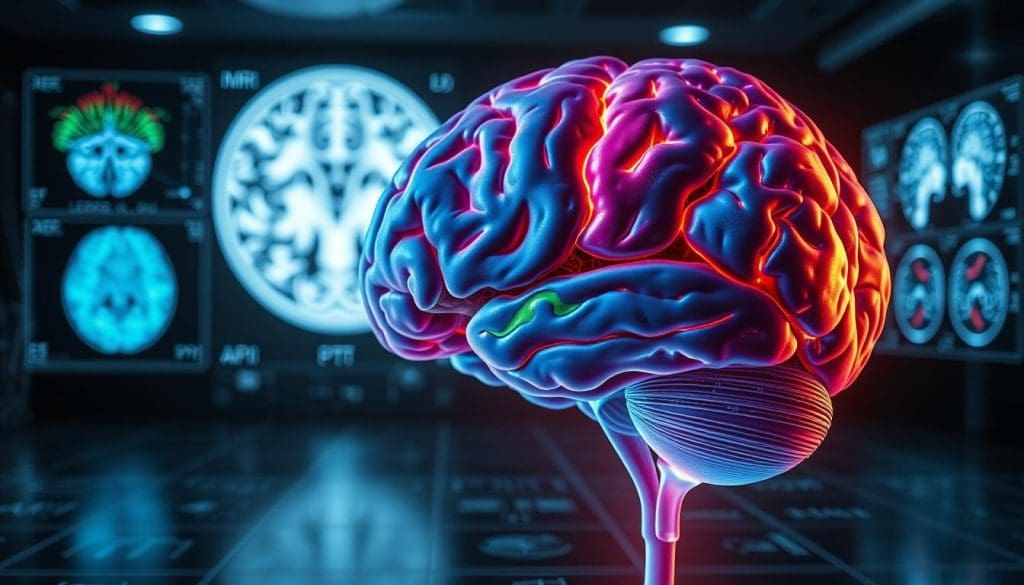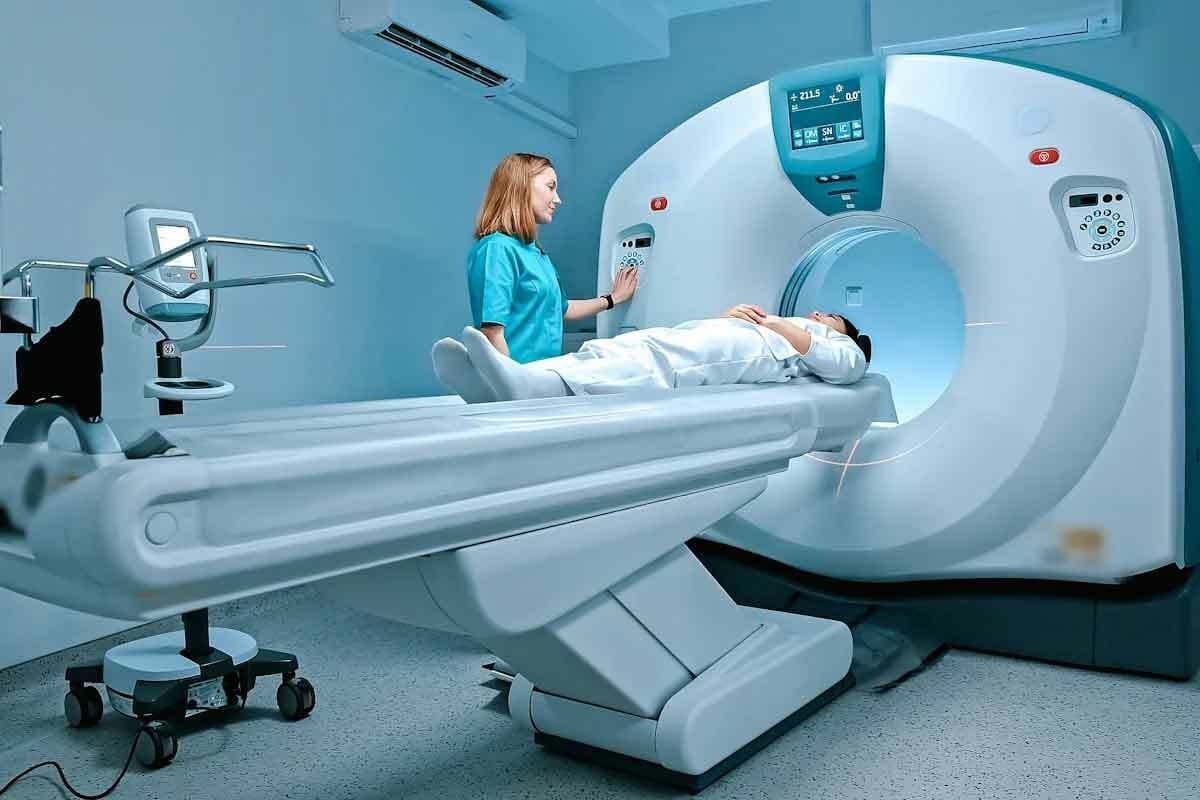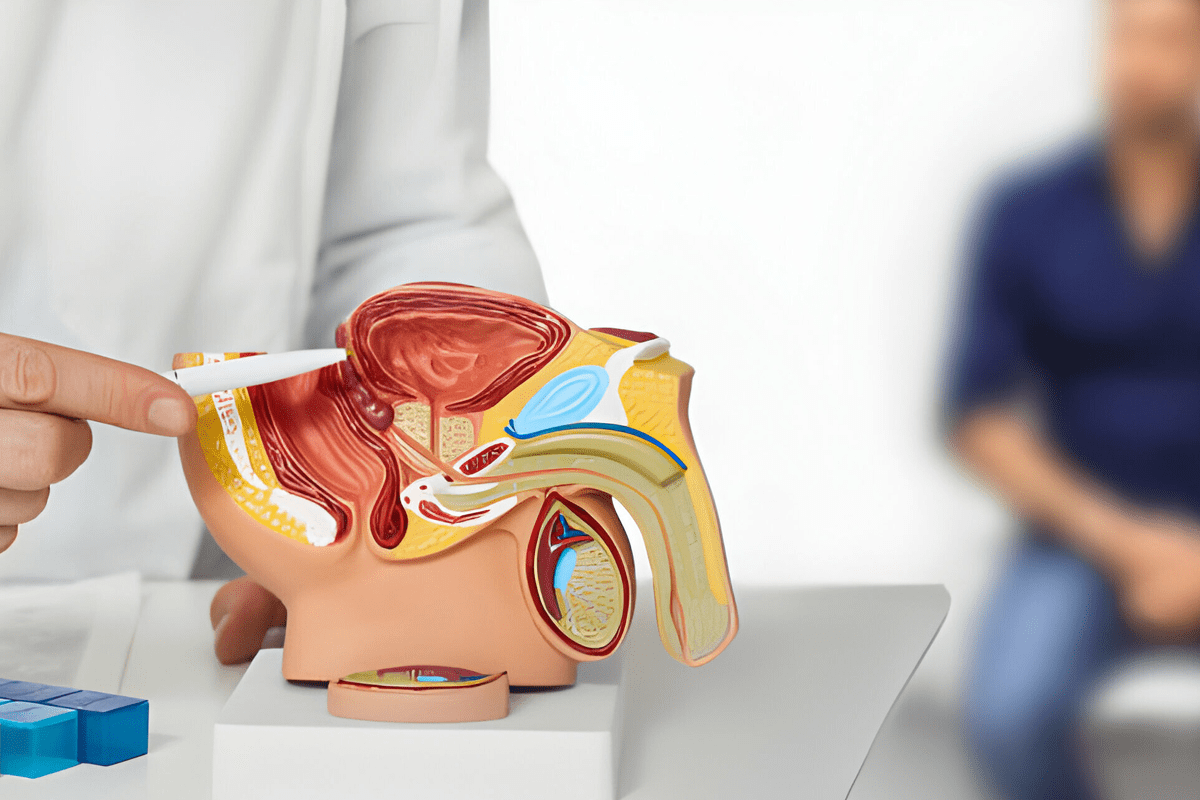Last Updated on November 27, 2025 by Bilal Hasdemir

Understanding your mental health can be complex. But, thanks to new medical tech, you can get insights from brain image scans. At Liv Hospital, we aim to offer top-notch care. This guide will help you get a brain image scan for mental health checks.
Scans like MRI, PET, CT, and SPECT help see brain structure and function. They help check mental health. . We’ll look at scan types and how to get scanned.
Key Takeaways
- Understand the different types of brain image scans available for mental health assessment.
- Discover the step-by-step process of getting a brain image scan.
- Explore the benefits of brain image scans in mental health assessment.
- Find out how Liv Hospital can support your mental health needs with international standards of care.
Understanding Brain Image Scans in Mental Health

Brain imaging has changed mental health by giving us new insights into the brain. It helps us understand and treat mental health issues better. As we learn more about the brain, these tools become even more important.
What Brain Imaging Reveals About Mental Health
Techniques like MRI and SPECT let us see the brain’s details. They show us how the brain works and what’s different in mental health issues. This helps us understand the brain’s activity, blood flow, and chemicals.
For example, people with depression show changes in the brain. The same goes for anxiety and ADHD. Brain scans help us see these changes.
The Connection Between Brain Function and Psychiatric Symptoms
The link between brain function and mental health symptoms is complex. Brain imaging shows how brain areas affect our feelings and behaviors. For instance, changes in the default mode network are linked to depression and anxiety.
This knowledge helps doctors create better treatment plans. By focusing on specific brain areas, treatments can be more effective.
The Growing Role of Neuroimaging in Psychiatry
Neuroimaging is becoming key in psychiatry. It helps in diagnosing and planning treatments. As we learn more about the brain, neuroimaging will play an even bigger role.
Using neuroimaging can lead to better patient care. It helps doctors give more accurate diagnoses and treatments. As the field grows, we’ll see more ways neuroimaging helps mental health care.
| Imaging Technique | Primary Use in Mental Health | Key Benefits |
| MRI | Structural brain imaging, detecting abnormalities | High-resolution images, non-invasive |
| SPECT | Functional brain imaging, assessing brain activity | Provides information on brain function, useful for diagnosing certain conditions |
| PET | Assessing metabolic activity, neurotransmitter function | Offers insights into brain metabolism and neurotransmitter systems |
Types of Brain Image Scans Used in Mental Health Assessment

There are many brain image scans used to understand mental health. Each scan has its own benefits. These scans have changed how we see the brain and mental health.
Magnetic Resonance Imaging (MRI)
MRI is a safe way to see the brain’s details. It uses strong magnets and radio waves. It’s great for finding physical problems that might cause mental health issues.
Positron Emission Tomography (PET)
PET scans use a tiny bit of radioactive material. They show how active the brain is. This is helpful for checking on mental health issues like depression and anxiety.
Computed Tomography (CT)
CT scans use X-rays to make images of the brain. They’re not as detailed as MRI but are faster. They’re good for quick checks or emergencies.
Single-Photon Emission Computed Tomography (SPECT)
SPECT imaging shows how different parts of the brain work. It looks at blood flow and activity. This is useful for many mental health problems.
Each scan has its own role in mental health checks. Knowing about them helps doctors pick the best one for each person.The SPECT scan then measures the tracer’s distribution in the brain.
The scan’s findings help doctors spot brain areas that might not be working right. They match these findings with the patient’s symptoms to decide on treatments.
| Condition | SPECT Imaging Findings | Treatment Implications |
| Depression | Decreased activity in prefrontal cortex | Targeted therapy to enhance prefrontal cortex function |
| ADHD | Altered activity patterns in prefrontal cortex and basal ganglia | Interventions to improve prefrontal cortex and basal ganglia function |
| Anxiety Disorders | Increased activity in amygdala | Treatments aimed at reducing amygdala hyperactivity |
When to Consider a Brain Image Scan for Mental Health
If traditional treatments don’t help, a brain image scan might be the next step. It can show how the brain works and looks. This helps doctors make better treatment plans.
Treatment-Resistant Mental Health Conditions
If you’re dealing with mental health issues that haven’t gotten better, a brain scan could help. Conditions like depression, anxiety, or ADHD might show up in brain scans. This can help doctors find the right treatment.
Complex or Unclear Diagnoses
When it’s hard to figure out what’s wrong because symptoms are similar, brain imaging can help. For example, SPECT imaging can tell different conditions apart. This makes it easier to find the right treatment.
History of Brain Injury or Trauma
People who have had brain injuries or trauma might need a brain scan. It shows how much damage there is. This helps doctors make a treatment plan that fits.
Monitoring Treatment Progress
Brain image scans can also track how well treatments are working. By comparing scans, doctors can see if things are getting better. This helps them make the treatment even better.
Deciding to get a brain image scan should be talked over with a doctor. But for many, it’s a big help in getting better.
- Key scenarios for considering a brain image scan:
- Treatment-resistant mental health conditions
- Complex or unclear diagnoses
- History of brain injury or trauma
- Monitoring treatment progress
Step 1: Consulting with Your Mental Health Provider
Talking to your mental health provider is the first step to see if a brain image scan is right for you. This meeting is key to knowing what you need and how brain imaging can help.
Discussing the Benefits of Brain Imaging
In your meeting, talk about brain imaging’s benefits with your provider. This tech can show issues not seen by other tests. It helps in making treatment plans that really work for you.
The good things about brain imaging are:
- It makes diagnosis more accurate
- It helps understand how your brain works and its link to mental health symptoms
- It leads to treatment plans that fit your brain’s unique needs
Getting a Professional Referral
Your provider can refer you to a good imaging place or expert. This referral is key to getting the right care and imaging that fits your needs.
| Referral Criteria | Description |
| Specialization | Make sure the place is good at brain imaging for mental health |
| Experience | Choose places with lots of experience like yours |
| Technology | Make sure they have the newest brain imaging tech |
Understanding Insurance Coverage and Requirements
It’s important to know about your insurance for brain imaging. Your provider can help you understand this, making sure you know what to expect financially.
Insurance Coverage Checklist:
- Check if your insurance covers brain imaging for mental health
- Know the costs you’ll have to pay and any deductibles
- See if you need pre-approval
By following these steps and talking to your mental health provider, you can decide if a brain image scan is right for you. This ensures it’s a good and affordable step in your mental health care.
Step 2: Researching Brain Imaging Facilities Near You
Looking into brain imaging facilities is key in your mental health journey. The right place can greatly affect your diagnosis and treatment plan.
Finding Specialized Mental Health Imaging Centers
It’s important to find centers that focus on mental health imaging. They have the latest tech and experience with similar cases.
Look for places that are accredited and have a good reputation. Ask your mental health provider for suggestions or search online for options near you.
Questions to Ask When Selecting a Facility
When picking a brain imaging facility, ask these questions to make a good choice. Here are some key things to consider:
- What experience does the facility have with mental health cases?
- What technology do they use, and is it up-to-date?
- How do they interpret scan results, and what do they look for?
- How do they integrate brain imaging into their treatment plans?
- What is their accreditation status, and are they certified by relevant professional bodies?
By carefully researching and evaluating brain imaging facilities, you can make an informed decision that supports your mental health care needs.
Step 3: Preparing for Your Brain Image Scan
Getting ready for a brain image scan is important. It helps get accurate results and makes the experience comfortable. We want to make sure you feel ready for your scan.
Pre-Scan Instructions and Restrictions
Before your scan, there are important steps to follow. These steps help make sure the scan goes well. Here are some things to do:
- Take off any metal items like jewelry, glasses, or hairpins. They can mess with the equipment.
- Don’t take certain medicines or substances. They might change the scan’s results.
- Follow any special diet rules. This depends on the type of scan you’re having.
It’s very important to follow these steps. This helps avoid problems and keeps your scan on schedule.
Medical History Documentation
Sharing your medical history is key for a good scan. This means:
- Telling about any past health issues, like brain or neurological problems.
- Listing all the medicines you’re taking and how much.
- Telling about any allergies or sensitivities you have.
Bring this information with you on scan day. This way, the doctors have everything they need.
What to Bring on the Day of Your Scan
Here’s what to bring to make your visit easy:
| Item | Description |
| Identification | A government ID for checking who you are. |
| Insurance Information | Your insurance cards and any important papers. |
| Medical History | A detailed list of your health, medicines, and allergies. |
| Comfortable Clothing | Wear loose, comfy clothes without metal parts. |
Being well-prepared helps your brain image scan go smoothly. It gives you important insights into your mental health.
Step 4: The Brain Image Scan Procedure Explained
Getting ready for your brain image scan? It’s good to know what’s coming. Learning about the scanning process can ease your worries and make the experience smoother. We’ll walk you through the scans, how long they take, and the safety steps.
What to Expect During Different Types of Scans
There are many brain image scans, each with its own way and reason. You might hear about Magnetic Resonance Imaging (MRI), Positron Emission Tomography (PET), Computed Tomography (CT), and Single-Photon Emission Computed Tomography (SPECT).
- MRI: You’ll lie on a table that slides into a big scanner. MRI scans can last from 15 to 90 minutes, based on the details.
- PET: You’ll get a special tracer injection before the scan. The PET scan usually takes about 30 minutes.
- CT: You’ll lie on a table that moves through a CT scanner, using X-rays to make images. CT scans are fast, taking just a few minutes.
- SPECT: Like PET, you’ll get a tracer injection. SPECT scans usually last 15-30 minutes.
Experts say, “SPECT scans have changed how we treat mental health.”
“SPECT scans give us a peek into the brain. They show us low activity, high activity, or where parts of the brain don’t talk to each other.”
Duration and Comfort Considerations
The scan’s length depends on the type. It’s important to stay calm and not move during the scan for clear images. Some scans might feel tight, which can worry those with claustrophobia.
| Scan Type | Typical Duration | Comfort Considerations |
| MRI | 15-90 minutes | May be challenging for those with claustrophobia |
| PET | About 30 minutes | Requires injection of radioactive tracer |
| CT | A few minutes | Quick and generally comfortable |
| SPECT | 15-30 minutes | Similar to PET, requires radioactive tracer |
Safety Protocols and Radiation Exposure
Safety is key during brain image scans. Scans that use radiation, like PET, CT, and SPECT, use controlled doses to keep risks low. MRI scans, which don’t use radiation, are safe but might not work for everyone, like those with metal implants.
Understanding your brain image scan is a big step in your mental health journey. Knowing what to expect helps you prepare and make smart choices about your care.
Step 5: Understanding Your Brain Scan Results
Understanding brain scan results needs a mix of medical knowledge and new imaging tech. When you get your results, a skilled expert should explain them to you. This is key for your mental health treatment.
How Specialists Interpret Brain Imaging Data
Experts look at brain scans for patterns and oddities linked to mental health issues. They compare your scans to a database of normal and abnormal ones. This helps spot any unusual patterns.
In SPECT imaging, they check blood flow in the brain. Low blood flow in some areas might point to depression or ADHD. They need to know a lot about how the brain works and its link to mental health.
Common Findings in Mental Health Conditions
Brain scans can show patterns linked to various mental health issues. For example:
- Depression: Often shows less activity in the prefrontal cortex.
- ADHD: Usually shows low activity in the prefrontal cortex and high in the basal ganglia.
- Anxiety: May show more activity in the amygdala.
These findings help doctors create treatment plans that target specific issues.
The Importance of Clinical Correlation
Brain imaging gives valuable insights, but it’s vital to link these with your symptoms and medical history. Clinical correlation means combining imaging data with your personal and family medical history, symptoms, and other diagnostic info.
“The true power of brain imaging lies not just in the images themselves, but in how they are used to inform and enhance clinical decision-making.”
-A leading neuroscientist.
By mixing brain scan results with your clinical info, doctors can better understand your condition. This leads to a more effective treatment plan.
The Limitations of Brain Imaging in Mental Health Diagnosis
Brain imaging has made big strides, but it has its limits in diagnosing mental health issues. It gives us a peek into the brain’s structure and function. Yet, it can’t be the only tool for diagnosing mental illnesses.
Why Scans Cannot Diagnose Mental Illness Alone
Scans like MRI, PET, or SPECT can’t diagnose mental illnesses by themselves. Mental health issues are complex and involve many factors. To diagnose, we need a full assessment that includes clinical checks, medical history, and psychological tests.
A study in the Journal of Clinical Psychology showed that brain imaging can spot some biomarkers for mental health. But, it can’t replace the doctor’s judgment. Clinical correlation is essential to understand the brain data in the context of symptoms and medical history.
“The diagnosis of mental health disorders requires a complete approach that includes both biological and psychological factors. Brain imaging is just one tool that can provide valuable information, but it must be used with other diagnostic methods.”-According to experts in psychiatry and neuroscience.
The Current State of Research Evidence
Research on brain imaging in mental health diagnosis is ongoing. There have been big steps forward, but challenges remain. Studies have found that brain imaging can spot patterns linked to mental health issues. Yet, more research is needed to fully grasp its role.
| Imaging Technique | Application in Mental Health | Limitations |
| MRI | Structural and functional brain analysis | Limited in detecting certain functional abnormalities |
| PET | Metabolic activity assessment | Involves radiation exposure |
| SPECT | Blood flow and activity assessment | Limited spatial resolution |
Balancing Biological Data with Clinical Assessment
It’s key to balance brain imaging data with clinical assessment for accurate diagnosis and treatment planning. We must look at both the biological basis of mental health and the individual’s clinical presentation.
Clinical assessment provides context for brain imaging data, ensuring a complete and accurate diagnosis. By combining brain imaging with clinical evaluation, healthcare providers can create more focused and effective treatment plans.
In conclusion, brain imaging is a powerful tool in mental health assessment, but we must understand its limits. By recognizing these limits and combining brain imaging with clinical assessment, we can offer more precise diagnoses and effective treatments.
Cost Considerations and Insurance Coverage
Brain imaging costs can vary a lot. It’s important to know these costs when choosing mental health care. This helps in making better decisions.
It’s key to know the costs of different brain imaging methods. Prices change based on the scan type, location, and where it’s done.
Typical Pricing for Different Brain Imaging Techniques
Prices for brain imaging scans range from a few hundred to several thousand dollars. Here’s a look at typical costs for different scans:
- MRI (Magnetic Resonance Imaging): $400 – $3,500
- PET (Positron Emission Tomography): $1,000 – $5,000
- CT (Computed Tomography): $200 – $1,500
- SPECT (Single-Photon Emission Computed Tomography): $800 – $2,500
These prices are just estimates. They can change based on where you are, the facility, and other things.
Insurance Coverage Challenges and Solutions
Getting insurance for brain imaging can be tough. Many plans cover it for some conditions, but it’s not the same for everyone.
Common challenges include:
- Pre-authorization requirements
- Coverage limitations
- Out-of-network providers
To deal with these issues, talk to your insurance and healthcare team. They can help you understand what’s covered and what you might have to pay.
Financial Assistance Options
If you’re struggling financially, there are ways to get brain imaging. Some places offer payment plans or fees based on how much you make.
It’s also worth exploring:
- Patient advocacy groups that may offer financial help or advice
- Clinical trials that might cover brain imaging costs as part of the study
- Non-profit groups that give financial aid for medical procedures
Knowing the costs and looking for help can help you make better choices for your mental health care.
Conclusion: Integrating Brain Image Scans into Your Mental Health Journey
Brain image scans are a valuable tool for managing mental health. They help us understand different scans like MRI, PET, CT, and SPECT. This knowledge lets people make better choices for their mental health care.
Using brain image scans can give us important insights into our brain’s function. This is very helpful for those with hard-to-treat mental health issues. It helps us see how our brain works and its role in our symptoms.
We suggest talking to your mental health provider about using brain imaging.This way, you can get a treatment plan that really works for you.
Adding brain image scans to your mental health journey can really help. It lets you understand your brain better and move towards better wellness.
FAQ
What is a SPECT scan and how is it used in mental health diagnosis?
A SPECT scan measures blood flow in the brain. It helps diagnose mental health issues like anxiety and depression. This is because it shows how the brain works and what it’s doing.
How do I find a facility that offers brain SPECT scans for psychiatric diagnosis near me?
To find a place for brain SPECT scans, look online or ask your doctor. You can also contact groups that focus on brain imaging.
Can brain scans diagnose mental illness?
Brain scans, like SPECT, MRI, and PET, give insights into brain function. But, they can’t diagnose mental illness alone. A full diagnosis needs a doctor’s evaluation, medical history, and scan results.
How do I prepare for a brain image scan for mental health assessment?
For a brain scan, follow the facility’s instructions. This might mean avoiding certain meds, removing metal, and arriving early to fill out forms.
What are the costs associated with brain imaging for mental health, and are they covered by insurance?
Brain imaging costs vary by scan type, facility, and location. Insurance might cover some scans, but not all. Check with your insurance and the facility about costs and coverage.
How do specialists interpret brain imaging data, and what do the results mean for my treatment?
Experts like radiologists and psychiatrists analyze scan images. They look for patterns or issues. Then, they use this info with your medical history to plan your treatment.
Can brain imaging be used to monitor treatment progress and adjust my treatment plan?
Yes, brain imaging can track treatment success and guide plan changes. It shows how brain function changes over time. This helps doctors adjust your care as needed.
Are there any risks or side effects associated with brain imaging scans?
Most brain scans, like MRI and SPECT, are safe. But, some scans with radiation might have risks. Always talk to your doctor about any concerns.
How can I find a qualified healthcare provider who offers brain imaging services?
To find a qualified provider, ask your doctor or look online. You can also contact groups focused on neuroimaging.
References
- Biswal, B. B., Yetkin, F. Z., Haughton, V. M., & Hyde, J. S. (1995). Functional connectivity in the motor cortex of resting human brain using echo-planar MRI. Magnetic Resonance in Medicine, 34(4), 537“541.https://pubmed.ncbi.nlm.nih.gov/8524021/






